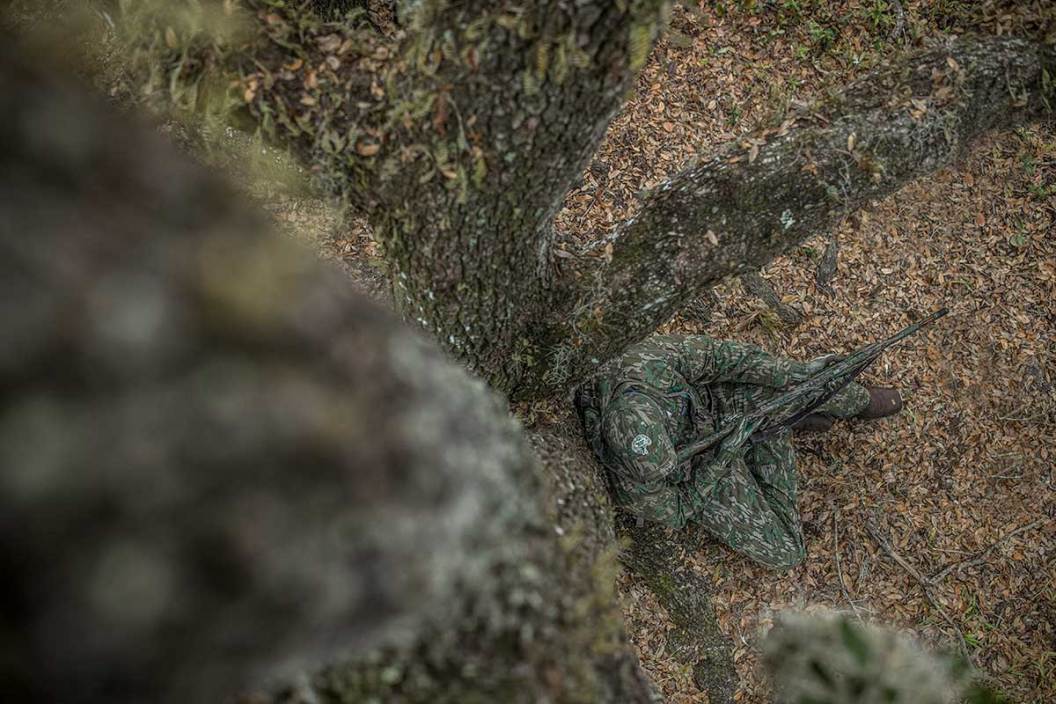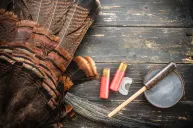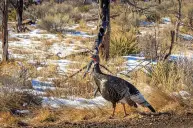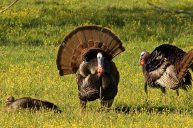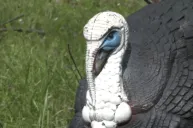Learning and sharing turkey hunting tactics is the sort of thing that makes the pursuit of these birds so exciting. Here are some seasonal tips that could make the difference.
Turkey hunting season approaches fast, and there are a few things to keep in mind when you hit the woods this spring.
Hunting these old birds can be very challenging, but rewarding at the same time, especially when it's time to fry up some turkey nuggets.
A wild turkey has stellar eyesight and can be extremely wary, making them tough to fool when trying to persuade them to come to you. Toms usually don't go to the hens; in fact it's quite the opposite. The Toms strut around trying to win favor with the hens while fighting off any other Tom that comes in with similar intentions.
The question becomes "How do I get a Tom so interested that he goes against his nature?"
The answer can be complex and doesn't work the same across the board. But if you complicate things too much, you're trending in the wrong direction. There are some simple things that can be done to get closer to a turkey present yourself an opportunity.
Deke Them Out
The use of decoys can be hugely helpful in creating a visual aesthetic for them to key in on. Decoys can be arranged in many different ways, but I've found using a strutter or Jake decoy with a couple hens tends to send these birds into a rage. That's my go-to when I want them to come in looking for a fight.
Sometimes they will go as far as attacking the decoys, which I think is one of the most exhilarating things to watch while afield. Place decoys where they can be seen by a Tom first thing in the morning, and you're
Don't overthink it. Figure out where the best shot exists, place your decoys accordingly, and settle in.
Calling All Turkeys
Aside from decoys, using as call that resembles a hen can be a great way to entice a Tom to come see what's going on. There are several types of sounds a hen turkey makes, from clucks to purrs to kee kee runs, but over-calling can result in the Tom staying out of sight.
Once you locate a bird, make an effort to get as close as you can without making a sound. Find a spot to set up and let out a couple yelps, giving him some time to respond. Continue sending out a couple yelps at a time with pauses in between. Remember that this is a chess match and takes patience.
Let him gobble and respond with subtle clucks and purrs to remind him a hot hen is still there. In fact, utilizing the purr is one of the best assets a hunter has. As the bird approaches, soften the call or don't call at all. Let him make the mistake of being too curious. Keep in mind that concealment is key at all times. Reduce your movement drastically to avoid being spotted on the approach.
Close the Gap
If you come across a situation where a Tom simply will not come any closer, observe the surrounding area and devise a plan to shorten the distance. Look for low-lying spots or high hilltops that are easily navigable, as long as they will keep you out of sight. It's worth it to look ahead for a place to hide upon arrival to the desired location.
A good hide, or set up location, is right at the base of a large tree. Using thick areas of grass or bushes can provide excellent cover, too. Use topography to your advantage so that a rise or dip can help block the bird from identifying you. Give yourself the best shooting lanes as possible, and consider gaining a little elevation above where you think the bird will approach. Shooting down is easier than shooting up.
When you're ready to begin calling after closing the gap, do it softly and less frequently. At this point, the distance has decreased so much that calling too loudly can push the bird away.
Stick to Your Guns
When the morning hunt doesn't go as planned, don't give up. Often times a Tom will gobble in the early afternoon once he has finished breeding the hens around him. At this point use the same tactics as before but don't answer him until the distance has been closed.
The most important part of having successful turkey hunts is knowing the bird's habits. Watch them roost, be there in the morning, and try to determine where they go after flying down.
Know as much as you can about the land you're hunting, and think about how that info may affect a turkey's patterns. Keep track of how much you call and how often. Hold out longer than you think you need to. Above all, have patience.
And ultimately, there are some times it just isn't going to work as you wish. Take a failure with a grain of salt, and try to at least learn from it. Then you'll be better poised the next time you try and tangle with Tom turkey.
